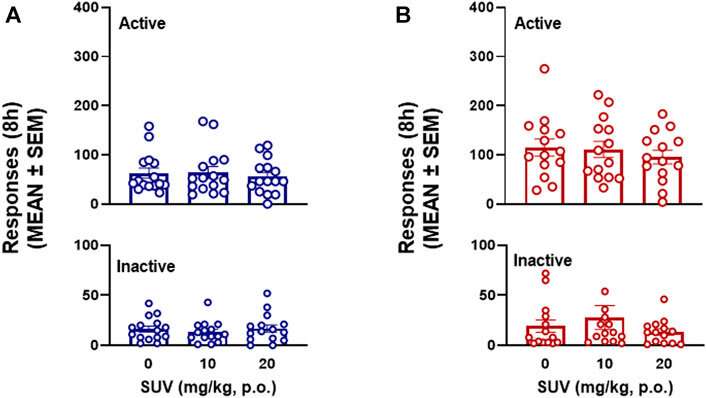This article has been reviewed according to Science X's editorial process and policies. Editors have highlighted the following attributes while ensuring the content's credibility:
fact-checked
peer-reviewed publication
trusted source
proofread
Preclinical study finds insomnia drug blocks oxycodone relapse

The insomnia drug suvorexant (Belsomra) might be an effective treatment for opioid use disorder, according to a preclinical study from Scripps Research.
In the study, published April 27, 2023, in Frontiers in Pharmacology, the Scripps Research scientists found that suvorexant reduced prescription opioid intake and helped protect against relapse in rats modeling opioid use disorder (OUD). If the results translate to humans in clinical trials, the insomnia drug could offer a promising approach for the millions of people who have OUD.
"Our results suggest that repurposing suvorexant could be a good strategy for reducing drug intake and blocking relapse in cases of prescription opioid abuse," says study senior author Rémi Martin-Fardon, Ph.D., associate professor in the Department of Molecular Medicine at Scripps Research.
The study's first author was Jessica Illenberger, Ph.D., a postdoctoral research associate in the Martin-Fardon lab.
In the U.S. alone, OUD is estimated to affect more than two million people, about 80,000 of whom die each year from opioid-related overdoses in an ongoing epidemic that has contributed to a striking decrease in Americans' average life expectancy. Available treatments for OUD include methadone, buprenorphine and naltrexone, but most patients relapse, making the need for better treatments urgent.
How suvorexant has a beneficial effect on OUD is not entirely clear, but it was designed to inhibit the activity of both the orexin-1 and orexin-2 brain-cell receptors. These receptors and their binding partners, known as orexin proteins, have been studied mainly for their roles in maintaining wakefulness, appetite, and overall arousal and alertness. Over the past two decades, however, evidence has accumulated that orexin signaling also helps sustain the process of drug dependency, hinting that it could be a good target for treatments.
Suvorexant, approved by the U.S. Food & Drug Administration (FDA) for treating insomnia in 2014, was the first drug to inhibit the activity of both orexin receptors. In a study published earlier this year, Martin-Fardon and colleagues found that suvorexant reduced alcohol intake and blocked relapse in a rat model of alcohol use disorder.
In the new study, Martin-Fardon and his team examined suvorexant's potential in reducing intake and blocking relapse in OUD—specifically involving the powerful and frequently abused prescription painkiller oxycodone.
Suvorexant is cleared from the bloodstream much more quickly in rats than in humans, but the researchers found that when oxycodone-dependent rats were given the maximum dose (20 mg/kg) of suvorexant a half hour before their oxycodone binge sessions, they self-administered significantly less of the opioid in the first hour of each eight-hour session.
Next, the researchers used a relapse model in which an auditory cue reminds long-abstinent rats of their past oxycodone binges. This normally triggers a reinstatement of strong oxycodone-seeking behavior, but the maximum suvorexant dose completely blocked this reinstatement in male rats, and significantly reduced its severity in females.
Martin-Fardon says the weaker effect in females was unsurprising, since—consistently with findings in many other addiction studies—they were clearly more deeply affected by opioid dependency: In their binges, they took more than twice the amount of oxycodone that males did, and their relapses were much stronger, too.
"If you were to treat people, you would have to consider whether the same dose of suvorexant would work equally well for men and women," Martin-Fardon adds.
On the whole, he says, the findings show that suvorexant does have an effect against both oxycodone intake during addiction and relapse behavior after abstinence, and thus would be worth studying in clinical trials in oxycodone-dependent patients.
He is now planning a follow-on preclinical study of whether suvorexant can restore normal sleep-wake cycles and thereby prevent relapse in animal models of oxycodone dependency.
Elsewhere, researchers have initiated small clinical trials of suvorexant as an add-on therapy in drug-use disorder patients.
More information: Jessica M. Illenberger et al, Suvorexant, an FDA-approved dual orexin receptor antagonist, reduces oxycodone self-administration and conditioned reinstatement in male and female rats, Frontiers in Pharmacology (2023). DOI: 10.3389/fphar.2023.1127735


















